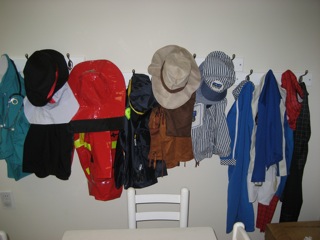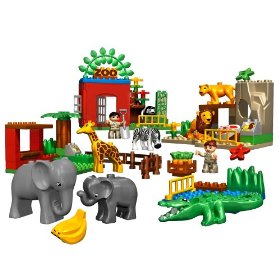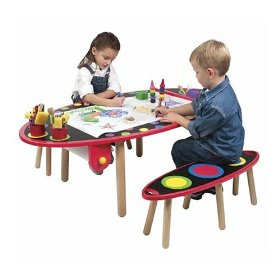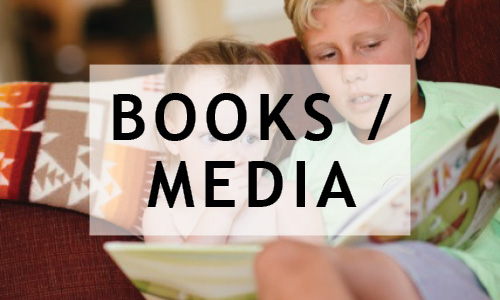 After the holidays, we all feel a little overwhelmed by the influx of new toys and games as the piles rise in the playroom. Where do we start to get organized, whittle down the mess and adopt a kid-friendly system to keep order? A well-organized play area is the backdrop for creative play. When a child has pretend food, menus, apron, spatula and fry pan available, he can begin to cook! If all the “pieces” are hidden at the bottom of a deep, large bin, he doesn’t have the tools for his work–creative play.
After the holidays, we all feel a little overwhelmed by the influx of new toys and games as the piles rise in the playroom. Where do we start to get organized, whittle down the mess and adopt a kid-friendly system to keep order? A well-organized play area is the backdrop for creative play. When a child has pretend food, menus, apron, spatula and fry pan available, he can begin to cook! If all the “pieces” are hidden at the bottom of a deep, large bin, he doesn’t have the tools for his work–creative play.
Since imaginative play builds language, as children invent stories, converse with peers, solve problems, share and take turns, a well-organized play area supports this development.
In my work with professionals in schools and families in their homes, I have seen a range of organization methods. Here are suggestions to get order in the playroom so creativity can thrive:
- Group toys by theme or category. The train, pirate, farm, school or playground bins should include props and people for that play theme. Play with the farm will last longer and be more creative if
 your child has access to the animals, farmer, tractor, or hay. Little people promote conversation, so make sure plenty of characters are in each box by theme. Don’t have planes
your child has access to the animals, farmer, tractor, or hay. Little people promote conversation, so make sure plenty of characters are in each box by theme. Don’t have planes  without pilots, zoos without zookeepers, or trains without conductors. I am tired of seeing train sets with no play figures available. Kids usually don’t talk for the trains and need pretend people to provide conversation. Typically a 3 year-old will pick up a miniature person and talk for it. A peer or parent can respond with another figure, extending the conversation, suggesting actions or solving problems. Flexible props like food, tools, clothes, vehicles, or buildings offer new options for the story line. Younger children need these props for their play, while older children will be more creative and “collect” props from around the house or use objects in an unconventional way such as talk into a banana as a phone. Another advantage of grouping toys by theme is that clean-up becomes a language building activity. You are teaching your child to group items by category.
without pilots, zoos without zookeepers, or trains without conductors. I am tired of seeing train sets with no play figures available. Kids usually don’t talk for the trains and need pretend people to provide conversation. Typically a 3 year-old will pick up a miniature person and talk for it. A peer or parent can respond with another figure, extending the conversation, suggesting actions or solving problems. Flexible props like food, tools, clothes, vehicles, or buildings offer new options for the story line. Younger children need these props for their play, while older children will be more creative and “collect” props from around the house or use objects in an unconventional way such as talk into a banana as a phone. Another advantage of grouping toys by theme is that clean-up becomes a language building activity. You are teaching your child to group items by category. - Make toys visible and accessible. Think smaller when it comes to bins or containers. Clear containers allow your child to see what is inside–what parts and pieces–so he can dig in and get just
 what he wants to keep the story going. Some systems angle the bins downward so your child can easily see the contents. An inexpensive option is to use shoe boxes or baskets to gather the toys by type. There are several organizational systems over a wide price range. One of my favorites and most affordable is the Tots Tutor Deluxe Wood Organizer. Look for bins you can look into, and have easy access to books as well.
what he wants to keep the story going. Some systems angle the bins downward so your child can easily see the contents. An inexpensive option is to use shoe boxes or baskets to gather the toys by type. There are several organizational systems over a wide price range. One of my favorites and most affordable is the Tots Tutor Deluxe Wood Organizer. Look for bins you can look into, and have easy access to books as well.
- Label by category. Exposing children to print, builds emergent literacy skills and gets them ready to read. They begin to recognize “Stop” on the road sign or “McDonalds” as they anticipate a Happy Meal. Since the playroom is their office, why not flood them with words in their place of work? Use the computer to print out large lettered words and pictures to identify your bins: “trains,” “vehicles,” “art” or “balls.” Children will begin to associate the picture with the written word and what is in the container.
- Keep at a your kid’s level. View your child’s playroom from the floor as they do. Get down to their level and see if toys, games, puzzles and books are easily accessible. Often I have visited homes where a fancy rack held the books but the top shelves were too high for their child to reach. Always have a basket of favorite books on the floor of rooms where your child spends time, including the kitchen.
- Provide paper and pencils. Research shows that preschoolers who practice writing letters, are better at recognizing letters. Having
 a permanent place for writing, with age appropriate materials such as crayons, colored pencils or markers and paper, encourages your child to incorporate writing into his play. Play money, signs, tickets and tags all contribute to pretend play. Add a small clip board and kids are mobile to act as a doctor writing out orders for his patient, a waitress taking an order, or a conductor writing out a train ticket. Written props can enhance dramatic play across many play themes–the doctor’s office, grocery store, restaurant, airport or school.
a permanent place for writing, with age appropriate materials such as crayons, colored pencils or markers and paper, encourages your child to incorporate writing into his play. Play money, signs, tickets and tags all contribute to pretend play. Add a small clip board and kids are mobile to act as a doctor writing out orders for his patient, a waitress taking an order, or a conductor writing out a train ticket. Written props can enhance dramatic play across many play themes–the doctor’s office, grocery store, restaurant, airport or school. - Set a table for ongoing play and art work. Children need a space where they can add on to their play, whether they have created a town, a space center, or a grocery store. When my boys were little we went to Home Depot and bought a length of counter top to span between file cabinets that served as an uninterrupted Lego land. A small table to house art supplies gives kids an option to draw a picture related to their play or create a prop to expand their story. Add some trees to the train’s terrain, or make a book for the doll. I like this art table by Alex because it accommodates several children and has built in organizers with cup holders and cups to gather writing implements and a canvas bag to hold bigger items. The chalkboard top can be covered by a continuous roll of paper so kids can work independently.



